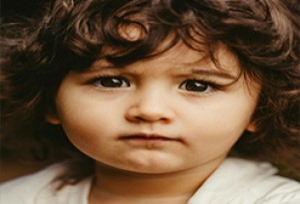

A work sample observation in early childhood education is a method used by educators to document and assess a child's learning and development through collected samples of their work. These samples can include drawings, paintings, writing, collages, and photographs of projects.
The following lists reflection questions to help educators develop cultural competence in early childhood settings.
Writing a group learning story is a fantastic way to document the collective learning experience of a group of children. Unlike individual learning stories, which focus on a single child, group learning stories capture the interactions, discoveries, and shared experiences of multiple children within a learning environment. The following article provides information on Steps to Write a Group Learning Story, Do I Have To Include All Children's Names?. Can I Include Group Stories In Individual Portfolios?, Best Practices For Documenting Group Learning Stories, Example Of A Group Learning Story and more.
The Early Years Learning Framework integrates creative arts into its curriculum planning to support children's development across multiple learning outcomes. The following article provides information on How Art Connects With EYLF Principles, What Are Some Creative Arts Activities For EYLF, How Can We Integrate Science into Creative Arts Activities, How Can We Integrate Music into Creative Art's Activities, What Are The Developmental Benefits Of Combining Art and Music, How Do Creative Arts Connect With EYLF Learning Outcomes and more.
A: Not necessarily! While follow-ups can be valuable, they aren't always required. Observations and learning stories serve different purposes, and whether a follow-up is needed depends on the context.
Quality Area 2 of the National Quality Standard focuses on Children’s Health and Safety, ensuring that environments are safe, hygienic, and supportive of children's well-being. Here are some practical examples of how this can be implemented in the workplace.
Anecdotal record observations are a valuable tool in early childhood education, helping educators document children's learning experiences and development. These records provide real-life observations that link directly to the EYLF outcomes. The following article provides Practical Examples Of Anecdotal Observations For Babies, Toddlers and Preschoolers and Practical Examples Of Anecdotal Observations For Each EYLF Learning Outcome.
Gathering children's voices for a program is all about ensuring that their ideas, opinions, and creativity shape the activities and experiences they participate in. The following article provides information on How Does Gathering Children's Voices Enhance Their Learning?, What Are Practical Ways To Gather Children's Voices? What Are Tips For Engaging Children In Discussions? Example Plans For Gathering Children's Voice and more.
Quality Area 1 of the National Quality Standard focuses on Educational Program and Practice, ensuring that learning experiences are child-centered, stimulating, and engaging. Here are some practical examples of how this can be implemented in the workplace.
 As an Educator in Australia, your pay rate falls under the Children’s Services Award 2010. This award states the minimum amount that an employer can… Read More
As an Educator in Australia, your pay rate falls under the Children’s Services Award 2010. This award states the minimum amount that an employer can… Read More
 When working as a qualified Early Childhood Teacher (with a university degree) within a service, your rate of pay will come from the Educational Services… Read More
When working as a qualified Early Childhood Teacher (with a university degree) within a service, your rate of pay will come from the Educational Services… Read More
 When working as a Diploma Qualified Educator your pay rate is from the Children's Services Award 2010. This Award states your minimum rate of pay… Read More
When working as a Diploma Qualified Educator your pay rate is from the Children's Services Award 2010. This Award states your minimum rate of pay… Read More
 When working as a Cert 3 Qualified Educator, your pay rate is from the Children's Services Award 2010. This Award states your minimum rate of… Read More
When working as a Cert 3 Qualified Educator, your pay rate is from the Children's Services Award 2010. This Award states your minimum rate of… Read More
 Educational Leaders play a crucial role in their early childhood service by ensuring that the educational program aligns with best practices and supports the holistic… Read More
Educational Leaders play a crucial role in their early childhood service by ensuring that the educational program aligns with best practices and supports the holistic… Read More
 In early childhood education and care, ratios are more than a technicality—they are a frontline safeguard. Every child deserves responsive supervision, emotional connection, and developmental… Read More
In early childhood education and care, ratios are more than a technicality—they are a frontline safeguard. Every child deserves responsive supervision, emotional connection, and developmental… Read More
 With the new national child safety reforms kicking in on 1 September 2025, early childhood services like yours have a real opportunity to lead the… Read More
With the new national child safety reforms kicking in on 1 September 2025, early childhood services like yours have a real opportunity to lead the… Read More
 Here’s a comprehensive Mobile Phone and Smart Watch Policy tailored for early childhood education and care (ECEC) services in Australia, aligned with the latest 2025… Read More
Here’s a comprehensive Mobile Phone and Smart Watch Policy tailored for early childhood education and care (ECEC) services in Australia, aligned with the latest 2025… Read More
 The Sea of Fish Challenge is a national initiative that invites children, educators, families, and communities to create and display fish artworks as a symbol… Read More
The Sea of Fish Challenge is a national initiative that invites children, educators, families, and communities to create and display fish artworks as a symbol… Read More
 Emotional awareness and self-regulation are crucial skills for young children, helping them navigate social interactions, manage their feelings, and develop resilience. The following article provides… Read More
Emotional awareness and self-regulation are crucial skills for young children, helping them navigate social interactions, manage their feelings, and develop resilience. The following article provides… Read More

Empowering educator well-being and belonging is about creating an environment where educators feel seen, supported...
See more...
In early childhood education, empowered teams are the heartbeat of quality practice. When educators feel...
See more...
Social distancing plays a key role in preventing the spread of coronavirus. This means putting...
See more...© 2009-2025 Aussie Childcare Network Pty Ltd. All Rights Reserved.

